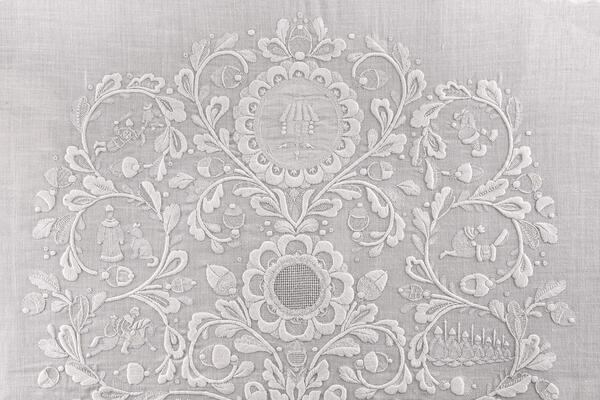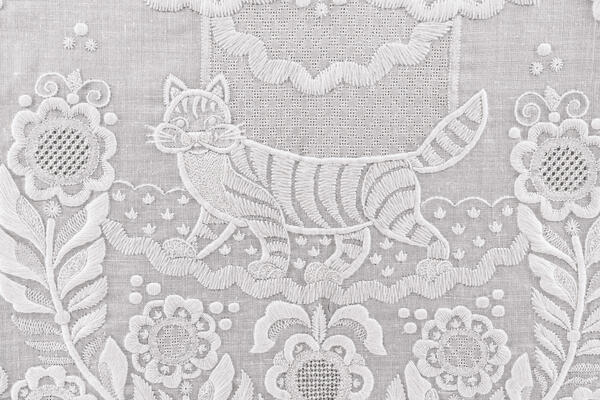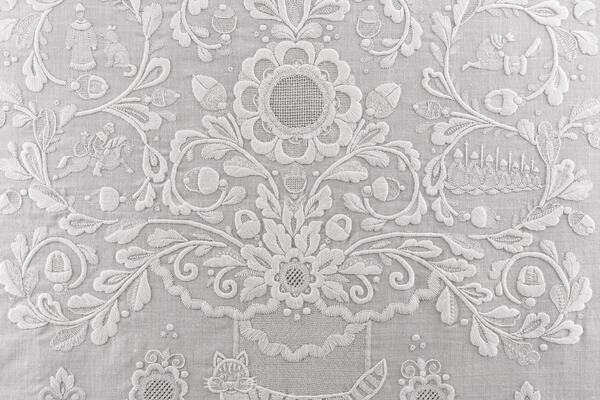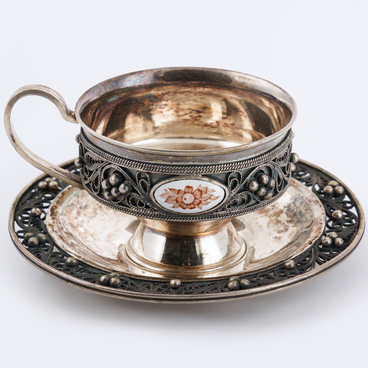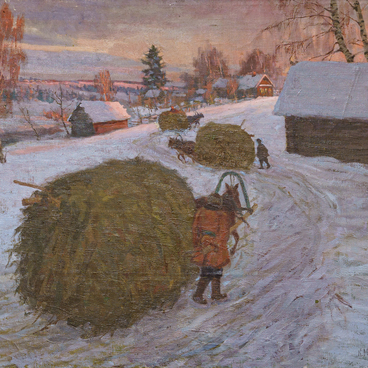The history of Mstyora embroidery dates back several centuries. The nuns of the convent in the name of St. John the Merciful laid the foundation for this highly artistic craft in the 18th century. They decorated clerical garments, church items, shrouds and icons with gold and silver embroidery.
Representatives of the new generation of Mstyora embroiderers carefully preserve the ancient traditions and reinvigorate the craft using new methods and techniques. The embroidery artist and teacher Irina Igorevna Yudina was born in 1955. She knows many traditional embroidery techniques, but satin stitch and “Vladimir topstitch” remain her favorites. A number of unique exhibition works by Irina Yudina are made in these techniques.
Whitework is a form of embroidery traditionally worked with white thread on white fabric. Skillful Mstyora craftswomen achieve a sophisticated play of white color and its various tones, creating convex patterns that vary in texture. Today, this technique is widely used to decorate clothes, bed linen and tablecloths. “Vladimir topstitch” is an embroidery method that consists in covering the front side of the fabric with large bright decorative stitches.
Fairy-tale themes inspired by the great Russian writer of the 19th century Alexander Pushkin play a huge role in Irina Yudina’s works. The panel “Tales of Alexander Pushkin”, made by the artist in 2019, is dedicated to one of Pushkin’s most popular verses — “By an Arc of Sea a Green Oak Stands”, the famous introduction to the poem “Ruslan and Ludmila”.
The artist used the traditional Mstyora whitework and satin stitch embroidery techniques. The panel is embroidered with white thread on a white almost translucent cotton fabric. In this work, both the background fabric and the embroidery are light and airy. This effect is achieved through a combination of various techniques — decorative stitches and openwork shapes. Hence, plain white embroidery acquires great expressiveness, lightness and elegance.
In the center of the composition there is an oak
tree with a lush crown of branches that form round medallions, depicting the
heroes of the poem: Ruslan and the wizard, the beautiful princess and the wolf,
Baba Yaga with her mortar (a character from Slavic folklore), Koshchei with his
gold, 30 beautiful knights and their mentor, coming out of the sea. In the
upper part of the tree, in the center of a round flower, there is a hut on
chicken’s legs.

